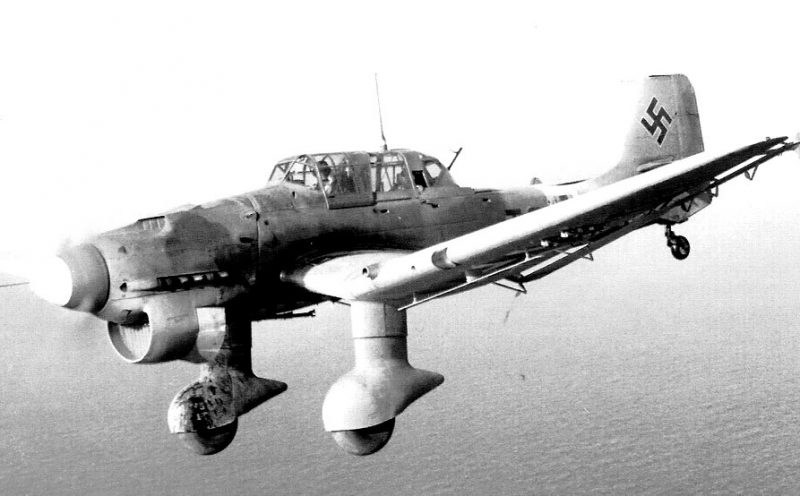War History Online presents a Guest Article by Pietro Giovanni Liuzzi
In the early hours of 3rd October 1943, a number of German Naval vessels arrived in the Aegean Sea between the islands of Pserinos and Kalymnos, approximately 4 miles from the Island of Kos.
The Italian lookouts along the northern coast between Marmari and Cape Sabbia near Lambi alerted the island command overloading the telephone system with continuous reports.
The Command was alarmed but did not believe the reports because British surveillance assured them that the Germans had insufficient ships for a seaborne invasion. They also thought that they might be British ships transporting materials and reinforcements to the units already on the island.
Meanwhile, the largest of the three German units had already begun to invade the island. At seven in the morning, a beachhead on the Tigaki coast was already consolidated.
Within a few hours, other German troops had beaten the advanced Italian defence. The villages of Pyli, Asfendiou, and Zia were occupied, and then they headed westward for the airfield.
Meanwhile, the German forces, reinforced by the second arrival of units turned southeast and headed for Kos Town.
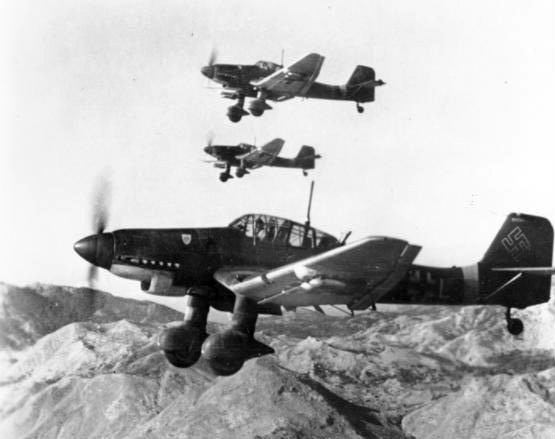
The three British companies who were ordered to defend the Tigaki – Platani line were ,after a short fight, unable to stop the enemy advance and retreated. The majority of men reached the Turkish mainland by various means. The remainder were captured, treated as prisoners of war, and after being initially assembled on the ground floor of the Governors Palace, were transferred to concentration camps in Germany.
By 20.00 hours Kos was occupied.
A second smaller German contingent disembarked on the south coast of the island near the Spa advancing over the hills sloping to the sea. This unit, after climbing the hills with the help of mules used to transport munitions and other equipment, found themselves behind the Italian artillery batteries. After close-quarter fighting the German unit won. They encountered heavy opposition near Platani where two companies, one Italian and the other British fought valiantly until they were defeated.
The third contingent, a naval and a paratroop unit, should have taken the airfield at Antimachi defended by Italians supported by a British company. Its landing in Camari Bay were delayed by rough seas. This meant that the area where the paratroops were due to land had not been secured and many of them were killed while in the air by the Italian defence.
Finally, the remaining naval units and paratroopers met up and together with the troops landed in Tigaki made their way to the airfield which was taken quickly.
The military action to take Kos was well planned. Experienced German troops, fresh from the Russian and Baltic conflict, having the latest equipment and with strong air cover, advanced, rapidly overpowering the British who, although well equipped, were poorly trained. The British unit was the Durham Light Infantry who for the previous two years had been employed on Malta cleaning up bomb damage. They had only received two weeks training in the Egyptian desert before being sent to Kos.
Kos, like Kefalonia, received no allied support. Mainly because of the difficult situation, the Allies found themselves in Italy following the Armistice on 8th September. Badoglio was foolish in declaring war on Germany on 13th October, 51 days after the Anglo-American armistice, and failed to stop German reinforcements by the Brenner Pass which made the Allied advance difficult.
The Nazi Wehrmacht troops collected 3500 Italian soldiers and interned them as traitors in Kos Castle. The German State exempted them from the Geneva treaty and allowed the German troops to treat them brutally.
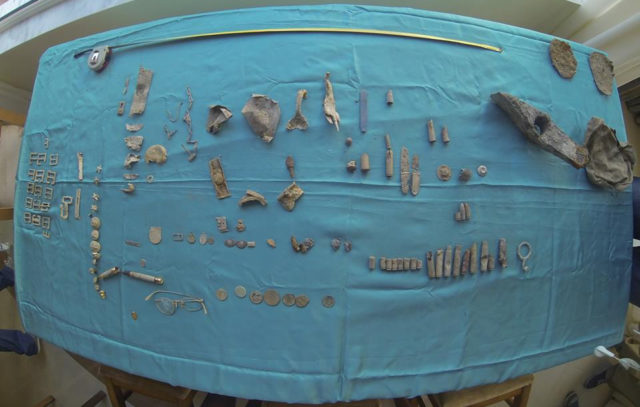
There were 148 Italian Officers in Cos on the date of the attack. Some were killed during the fighting, while others were in hospital before being sent to prisons in Germany. 110 officers were collected in the Vittorio Egeo barracks near Prophet Elias hill in Linopoti. They were invited to serve in the German army, seven accepted; the other 103 were transferred to the small port of Tigaki in tiny groups where, they were told, they would leave for prisoner of war camps on the continent.
Instead, a few kilometres away, they were shot by a machine gun hidden in the bushes. A year later 66 bodies were found in 8 mass graves in “Campo delle Fosse” Linopoti. There was no trace of the remaining 37.
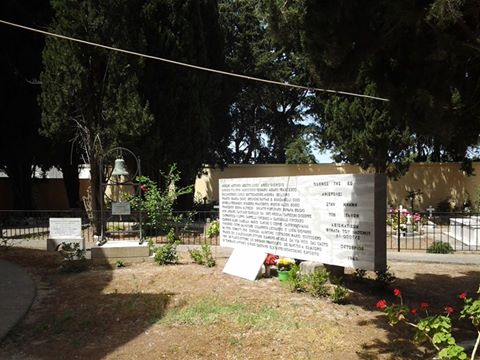
The Italian authorities refused repeated requests by the Comitato Caduti di Kos carry out a search because of the lack of reliable information.
In 2015 a group of Italian volunteers, funded by some of the families and friends of the officers, carried out excavations in “Campo delle Fosse” for a week.
The group managed to find one of the three possible mass graves described by Father Bacheca, a priest present at the early research, in his 1947 report which is in the archives of the Italian Army General Staff.
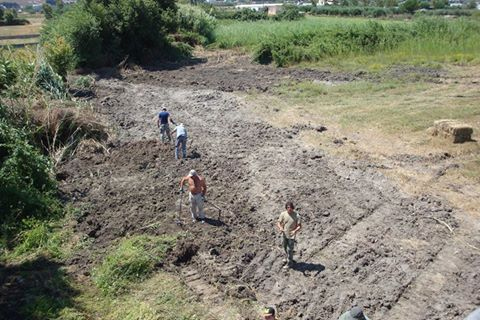
Many objects belonging to some of the officers (including a gold medal, a denture with two gold teeth, a fountain pen with three gold rings, and a pair of spectacles) were found and are now in the Museum of Modern History opened in Kos by the President of the Hellenic Republic on 7th March 2016.
The few skeletal remains, examined in the Department of Paleo-radiology at the University of Trieste, belonged to two young men aged 26 (84 of the 103 Italians were under 28). The remains were buried on 29th May in a tricolour flag at a religious ceremony at Cos Catholic Cemetery sadly without military honours.
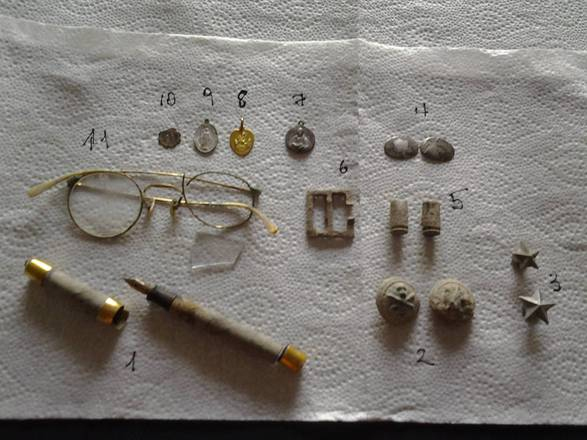
Their viaticum was accompanied by three chimes of the Bell of Memory, donated by the Province of Latina, which will chime on 6th October every year to keep the Memory alive.
By Pietro Giovanni Liuzzi
“Operazione Lisia : alla ricerca degli ufficiali italiani caduti a Kos, 6 ottobre 1943″
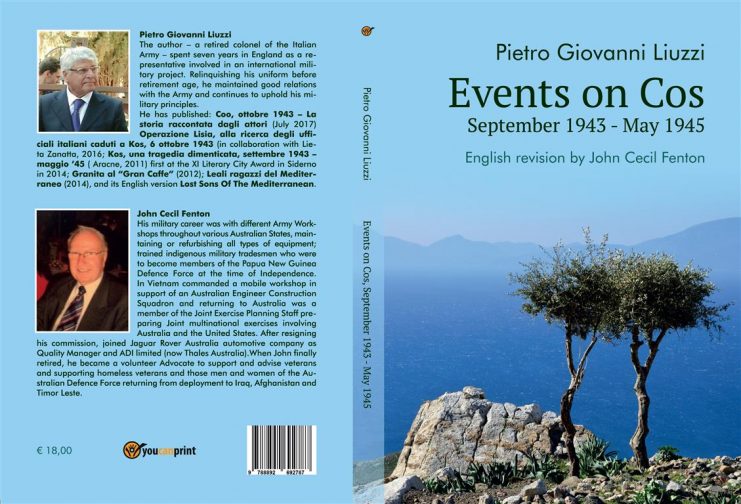
Pietro’s book “Events on Cos, September 1943 – October 1945″ is available from the 4th of December 2017 in hard copy and e-book.
Twenty days after the unjustifiable and monstrous violence of the German Gebirsjäger on the Acqui Division, a second offence was committed by the Grenadiers of General Müller’s 22nd Division on Cos Island: 103 Italian officers were shot as Badoglio’s troops and therefore considered traitors. Approximately one year after the tragic event, thanks to the will of some compatriots present on the island, 66 officers’ bodies were found in eight mass graves. Only 42 were recognized. Today, their remains are at the Bari Overseas Military Ossuary. 37 officers were never found. The Italian Institutions did not want to search for them entrenching themselves behind the vastness of the area concerned. In 2015, with the Operation Lysias, a group of Italian volunteers and the indispensable contribution of some Greek friends, with limited economic and temporal means, did some excavation and found one common grave. Few bones and personal belongings other than some cartridges of the Grace Stroke were found. It is up to the Institution to complete the opera. This essay intends to tell what emerged from testimonies and archive documents with the aim of redeeming the memory and honour of those Men in arms.
“Events on Cos, September 1943 May 1945”
By Pietro Giovanni Liuzzi
ISBN: 9788892692787
